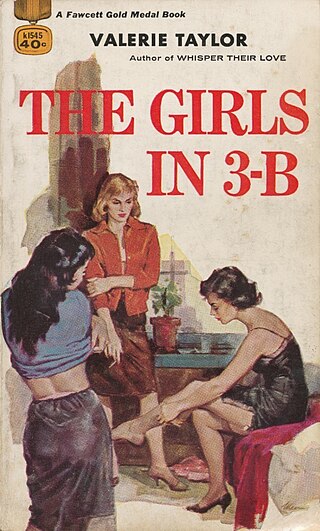
A lesbian is a homosexual woman or girl. The word is also used for women in relation to their sexual identity or sexual behavior, regardless of sexual orientation, or as an adjective to characterize or associate nouns with female homosexuality or same-sex attraction. The concept of "lesbian" to differentiate women with a shared sexual orientation evolved in the 20th century. Throughout history, women have not had the same freedom or independence as men to pursue homosexual relationships, but neither have they met the same harsh punishment as gay men in some societies. Instead, lesbian relationships have often been regarded as harmless, unless a participant attempts to assert privileges traditionally enjoyed by men. As a result, little in history was documented to give an accurate description of how female homosexuality was expressed. When early sexologists in the late 19th century began to categorize and describe homosexual behavior, hampered by a lack of knowledge about homosexuality or women's sexuality, they distinguished lesbians as women who did not adhere to female gender roles. They classified them as mentally ill—a designation which has been reversed since the late 20th century in the global scientific community.

Butch and femme are terms used in the lesbian subculture to ascribe or acknowledge a masculine (butch) or feminine (femme) identity with its associated traits, behaviors, styles, self-perception, and so on. The terms were founded in lesbian communities in the twentieth century. This concept has been called a "way to organize sexual relationships and gender and sexual identity". Butch–femme culture is not the sole form of a lesbian dyadic system, as there are many women in butch–butch and femme–femme relationships.

Margie Adam is an American musician and composer.

Katharine Susan Anthony, sometimes also spelled Katherine, was a US biographer best known for The Lambs (1945), a controversial study of the British writers Charles and Mary Lamb.
Elisabeth Antoinette Irwin was the founder of the Little Red School House. She was an educator, psychologist, reformer, and declared lesbian, living with her life partner Katharine Anthony and the two children they adopted.
A "Boston marriage" was, historically, the cohabitation of two wealthy women, independent of financial support from a man. The term is said to have been in use in New England in the late 19th–early 20th century. Some of these relationships were romantic in nature and might now be considered a lesbian relationship; others were not.
Feminist separatism is the theory that feminist opposition to patriarchy can be achieved through women's separation from men. Much of the theorizing is based in lesbian feminism.
The Lavender Menace was an informal group of lesbian radical feminists formed to protest the exclusion of lesbians and their issues from the feminist movement at the Second Congress to Unite Women in New York City on May 1, 1970. Members included Karla Jay, Martha Shelley, Rita Mae Brown, Lois Hart, Barbara Love, Ellen Shumsky, Artemis March, Cynthia Funk, Linda Rhodes, Arlene Kushner, Ellen Broidy, and Michela Griffo, and were mostly members of the Gay Liberation Front (GLF) and the National Organization for Women (NOW).

A romantic friendship, passionate friendship, or affectionate friendship is a very close but typically non-sexual relationship between friends, often involving a degree of physical closeness beyond that which is common in contemporary Western societies. It may include, for example, holding hands, cuddling, hugging, kissing, giving massages, or sharing a bed, without sexual intercourse or other sexual expression.
Bisexual chic is a phrase used to describe the public acknowledgment of bisexuality or increased public interest or acceptance of bisexuality. Another usage describes a faddish attention towards bisexuality. Bisexual chic is often accompanied by celebrities publicly revealing their bisexuality.
Lillian Faderman is an American historian whose books on lesbian history and LGBT history have earned critical praise and awards. The New York Times named three of her books on its "Notable Books of the Year" list. In addition, The Guardian named her book, Odd Girls and Twilight Lovers, one of the Top 10 Books of Radical History. She was a professor of English at California State University, Fresno, which bestowed her emeritus status, and a visiting professor at University of California, Los Angeles (UCLA). She retired from academe in 2007. Faderman has been referred to as "the mother of lesbian history" for her groundbreaking research and writings on lesbian culture, literature, and history.

Lesbian literature is a subgenre of literature addressing lesbian themes. It includes poetry, plays, fiction addressing lesbian characters, and non-fiction about lesbian-interest topics.
Fannie Mae Clackum was the first person to successfully challenge her discharge on the grounds of homosexuality from the U.S military.
Noretta Koertge is an American philosopher of science noted for her work on Karl Popper and scientific rationality.
Anamika was an early newsletter for South Asian lesbians and bisexual women. The newsletter was published in Brooklyn, New York. Its first issue was published in May 1985 by a lesbian collective. Three issues were published before it shut down in 1987.
Beverly Shaw was an American nightclub singer whose career centered on lesbian clubs in California. She was also the owner of a gay nightclub in Los Angeles, California, United States.
Elizabeth Meese was an American academic who specialized in feminist theory. She was a professor at the University of Alabama, in the English Department, which named an award for her, the "Elizabeth Meese Memorial Award in Feminist Theory".

The Girls in 3-B is a classic work of lesbian pulp fiction by Valerie Taylor which was published in 1959 by Fawcett. Its happy ending for a lesbian character was unusual for the time period. It was one of the first three novels of any pulp fiction genre to be reprinted in 2003 by Feminist Press.







